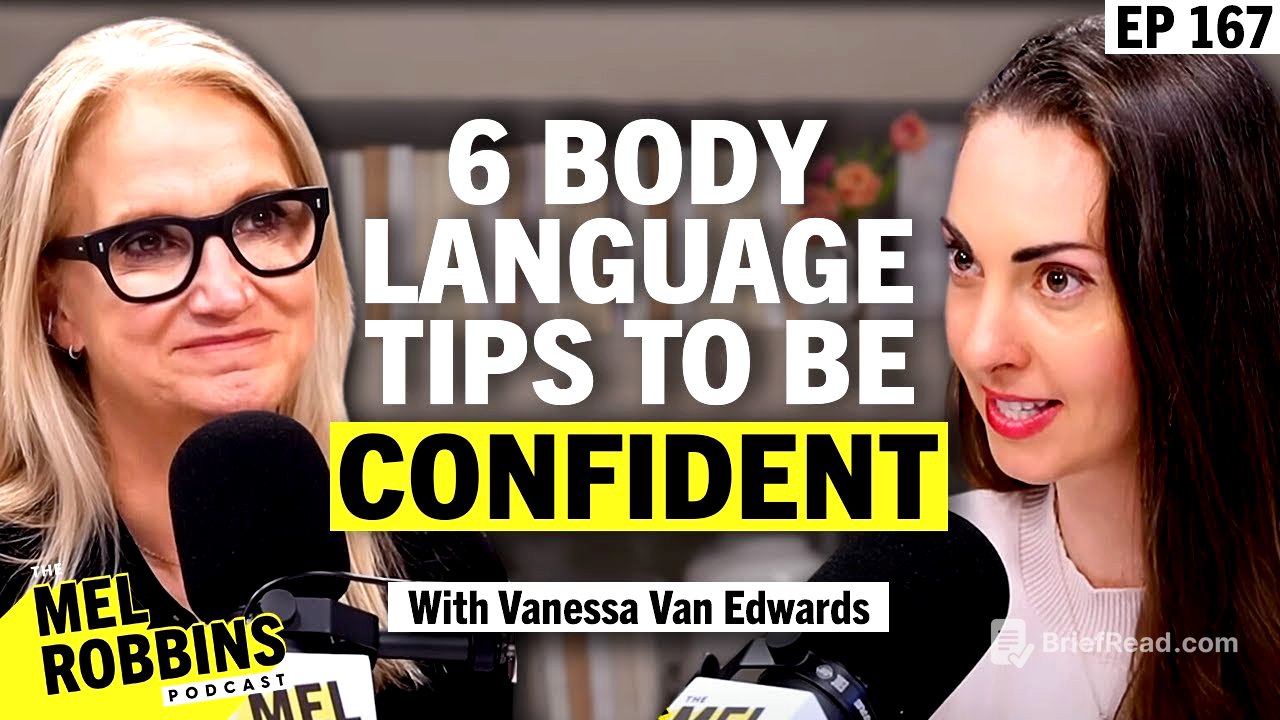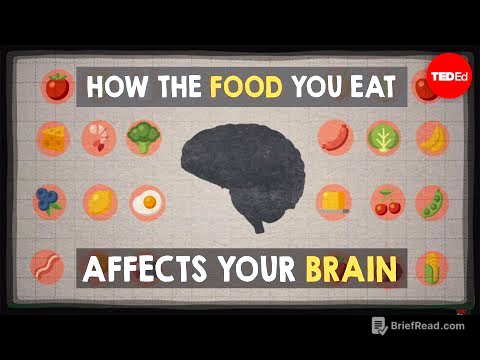TLDR;
This video features Mel Robbins interviewing Vanessa Van Edwards, who shares science-backed strategies for high achievers to improve communication, relationships, productivity, and overall success. The discussion covers topics such as managing social and work energy, eliminating ambivalent relationships, using the Pygmalion effect, increasing likeability, understanding body language cues, employing strategic verbal communication, and optimizing daily tasks.
- Assertiveness with energy
- Eliminating ambivalence
- Strategic communication
Intro [0:00]
Mel Robbins introduces Vanessa Van Edwards, founder of the Science of People, to share research-backed strategies for achieving success. Van Edwards emphasizes that high achievers use communication shortcuts to say no, achieve goals, and understand themselves. The goal is to help driven individuals improve their lives without burning out, focusing on assertive energy management rather than busyness.
The shortcuts high achievers take to communicate effectively. [4:47]
Highly effective people understand and assertively manage their social and work energy. Social energy involves interactions and communication, while work energy focuses on tasks and goals. High achievers identify activities and relationships that either charge or drain these energies, strategically saying no to draining tasks and prioritizing those that fuel them.
The mistake most people make when working on their goals. [5:32]
The biggest mistake smart people make is focusing solely on work energy, neglecting the impact of social interactions. It's crucial to recognize which social activities and relationships drain or energize you. Introverts may find most social interactions draining, while others gain energy from one-on-one conversations or teaching.
These relationships are the most toxic ones. [8:08]
The most toxic relationships are ambivalent ones, which drain energy without clear positive or negative indicators. High achievers avoid ambivalence by categorizing relationships: those they eagerly make time for (good), those they dread (toxic), and those they are unsure about (ambivalent). It's recommended to temporarily cut ties with ambivalent relationships to assess their impact.
What makes some kids more popular than others will surprise you. [13:34]
The most liked, popular kids had the longest list of people they liked. Being likable involves spreading likability by finding ways to like more people and showing it. This includes acknowledging others, using their names, and expressing genuine appreciation.
How to make your friendships stronger. [15:41]
Highly effective people relentlessly pursue and show appreciation for those they genuinely like. It's important to be assertive in expressing liking and admiration. Authenticity is key; avoid faking it, as genuine happiness is more contagious.
People who make mistakes are more likable. [20:29]
Vulnerability makes you more likable. Mistakes make you more likable because it shows you are not trying to impress others. Sharing fears and weaknesses fosters connection and authenticity.
How your toes give you away when you’re in a group. [24:47]
Toes often reveal where attention is directed; people tend to point their toes towards the most important person in the room. Influential people claim their space physically. Maximize the distance between your earlobes and shoulders to appear more confident.
Do this when you walk into a room to appear more confident. [26:13]
Maximize the distance between your ear and shoulder to appear more confident. Hunching shoulders to protect the neck signals a lack of safety to the brain, increasing cortisol and awkwardness. Holding your phone up and out, rather than hunched over, also projects confidence.
Why your office chair should have arm rests and swivel. [34:23]
Use a desk chair with armrests to claim space and broaden posture, increasing oxygen intake and vocal power. Swivel chairs allow you to front, or turn your body, toward the person speaking, showing respect and alignment.
Here’s why you are more likely to believe gestures than words. [39:12]
Visible hands are crucial for communication. Gestures communicate more information and are more believable than words. Use explanatory gestures to underline and highlight your points, demonstrating belief in your content.
How to stop using vocal fry or get someone else to stop doing it. [42:21]
To avoid vocal fry, speak louder. Volume eliminates vocal fry.
Use these words to set your team up for success. [44:07]
Use verbal cues to influence behavior. Replace sterile calendar invites with purposeful titles that prime people for success, such as "Collaborative Session" or "Creative Hour." Sprinkle achievement-oriented words like "master," "success," and "win" into directions and communications to motivate and improve performance.
What to add to your calendar every day to keep you motivated. [49:11]
Use behavior cues in self-talk and calendar invites to stay motivated. Label tasks with words like "winning morning" or "power up" to prime yourself for success.
What are the best conversation starters? [51:08]
Break autopilot in conversations by avoiding safe questions like "How are you?" and "What do you do?" Instead, ask "What's good?" or "Working on anything exciting?" to trigger positive responses. Be cautious with "What's your story?" as introverts may dislike it. Safe, highly-rated questions include "What personal passion project are you working on?" and "What was the highlight of your week?".
How other people’s fear is contagious. [56:53]
Sitting within 25 feet of a high performer improves your performance by 15%, while sitting near a low performer decreases it by 30%. Fear and negativity are contagious through micro cues and chemical signals. Prioritize self-care and positive self-talk to avoid becoming negatively contagious.
The worst place to stand in a room when you’re at a party. [1:01:12]
Avoid standing near the entrance at networking events, as people are not yet ready for high-quality connections. The best place to stand is near the exit of the bar, where people are ready to connect after getting a drink. If alone, stand in the eyeline of the host or most extroverted person to facilitate connections.
How to figure out what you’re really good at. [1:04:53]
Optimize your day by focusing on A-work (tasks you excel at) and delegating B, C, and D-work. Partner with people who have different strengths to complement your weaknesses. A-work is what you are exceptionally good at, B-work is what you are pretty good at, C-work is average, and D-work is what you are bad at.
What do highly effective people do at the end of the day? [1:14:41]
Highly effective people pause at the end of the day to reflect on their accomplishments and challenges. They prioritize thinking and space in their daily patterns, avoiding busyness and burnout. They enjoy the process of achieving goals as much as the goals themselves, setting themselves up for success.









